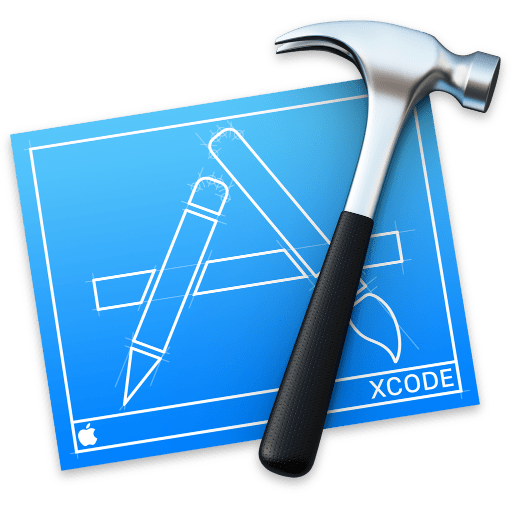Automate setting up Xcode
Nov 5, 2018 ·
In this post, I will show how to automate setting up Xcode using Homebrew and Fastlane in a way that is easy to extend if you need to automate more later on.

Why automate?
I prefer to automate as many tasks as possible, to reduce the amount of repetitive manual work, reduce the risk of human error and increase the overall reliability of a process.
For a team, automation can streamline the setup of a developer environment and make it easy to follow conventions. For instance, swiftlint can help to enforce code conventions, code snippets can be used to generate comments and code blocks etc.
External dependencies
When you need external dependencies to build and run a project, consider using package and dependency managers to setup dependencies with a single command.
For instance, we can use tools like Homebrew and Fastlane and compose them in a way that makes the setup process simple and painless.
For instance, you can add a Brewfile to your project root and add all required tools to it:
brew "carthage"
brew "swiftgen"
brew "swiftlint"
Your can now install all these tools by typing a single command in the Terminal:
brew bundle
Although homebrew is a standard tool, you can always make it even more accessible with Fastlane. Just add this lane to your Fastfile:
desc "Setup Xcode"
lane :setup_xcode do |options|
sh "cd .. && brew bundle"
end
Now, you can just type fastlane setup_xcode to install all tools. It may seem like a no-win, but the nice thing with this approach is that it can be extended to handle even more tasks.
Linting
Linting is a way to automatically validate that code follows established conventions. To do this, you use a code analyzer tool called a linter.
swiftlint is a great Swift linter that triggers warnings and errors if the code doesn’t follow certain conventions. You can customize the standard setup by adding a .swiftlint.yml to the project root, in which you can ignore rules, tweak them, add new rules, etc.
The SwiftLint readme suggests that you add this Run Script Phase to your app target:
if which swiftlint >/dev/null; then
swiftlint
else
echo "SwiftLint does not exist, download from https://github.com/realm/SwiftLint"
fi
Since this is a critical tool, I prefer it to be mandatory, and therefore skip the if/else check:
swiftlint
This means that the app fails to build whenever SwiftLint isn’t available, which means that it has gone from being an optional to a required tool.
Since Swift Packages don’t have a build phase where you can add SwiftLint. I instead add it to certain lanes, to make it part of critical processes, like creating new versions.
Xcode snippets
Xcode snippets can be used quickly add text you type often. For instance, I use it for MARK blocks, extension bodies, test templates, etc.
Xcode snippets save a lot of time and make the code look the same across the codebase.
For instance, I have a snippet that creates a “plain” // MARK - and have it defined in a file named mark_plain.codesnippet:
<?xml version="1.0" encoding="UTF-8"?>
<!DOCTYPE plist PUBLIC "-//Apple//DTD PLIST 1.0//EN" "http://www.apple.com/DTDs/PropertyList-1.0.dtd">
<plist version="1.0">
<dict>
<key>IDECodeSnippetCompletionPrefix</key>
<string>mark_plain</string>
<key>IDECodeSnippetCompletionScopes</key>
<array>
<string>All</string>
</array>
<key>IDECodeSnippetContents</key>
<string>// MARK: - </string>
<key>IDECodeSnippetIdentifier</key>
<string>6A7BC3C9-32A4-4EE8-A8DC-7848BC0E40F3</string>
<key>IDECodeSnippetLanguage</key>
<string>Xcode.SourceCodeLanguage.Swift</string>
<key>IDECodeSnippetTitle</key>
<string>Mark</string>
<key>IDECodeSnippetUserSnippet</key>
<true/>
<key>IDECodeSnippetVersion</key>
<integer>2</integer>
</dict>
</plist>
Since snippets are powerful, I decided to automate how my team shares these snippets. It was very easy, since snippets are just text files.
It therefore basically just involved setting up a shared folder with snippets files and writing a script that copies these files to the correct place.
For my personal projects, I just added a snippet folder to a setup project that I made public here, then created a script that copies these files to the correct place.
The copy script looks like this:
#!/bin/bash
path_src=Snippets
path_dst=~/Library/Developer/Xcode/UserData/CodeSnippets
mkdir $path_dst
for file in $path_src/*.codesnippet; do
cp $file $path_dst/$(basename $file)
done
At work, where my team works on many projects that has shared conventions, I added a snippet folder to a shared repo, then added work-specific snippets to it.
After that, I extended setup_xcode to copy all these
snippets to their correct place as well:
desc "Setup Xcode"
lane :setup_xcode do |options|
setup_xcode_tools
setup_xcode_snippets
end
desc "Setup Xcode Tools"
lane :setup_xcode_tools do |options|
sh "cd .. && brew bundle"
end
desc "Setup Xcode snippets"
lane :setup_xcode_snippets do |options|
snippets_path = File.expand_path('../Snippets/*.codesnippet')
snippets_paths = [snippets_path].flatten
snippets = snippets_paths.map { |f| f.include?("*") ? Dir.glob(f) : f }.flatten
target_path = File.expand_path('~/Library/Developer/Xcode/UserData/CodeSnippets')
FileUtils.cp_r(snippets, target_path, remove_destination: true)
end
Running fastlane setup_xcode will now run brew bundle and copy snippets. This means that we have a way to set up Xcode, that we can easily extend whenever we need.
Conclusion
Shell scripts, dependency managers and Fastlane are convenient ways to set up Xcode with a single command, which can help you standardize a personal or work environment.
Tools like swiftlint make it easy to enforce code conventions, while code snippets can generate code and comments that should follow a desired format.
Feel free to check out my setup script for some examples, scripts and code snippets.
Discussions & More
If you found this interesting, please share your thoughts on Bluesky and Mastodon. Make sure to follow to be notified when new content is published.